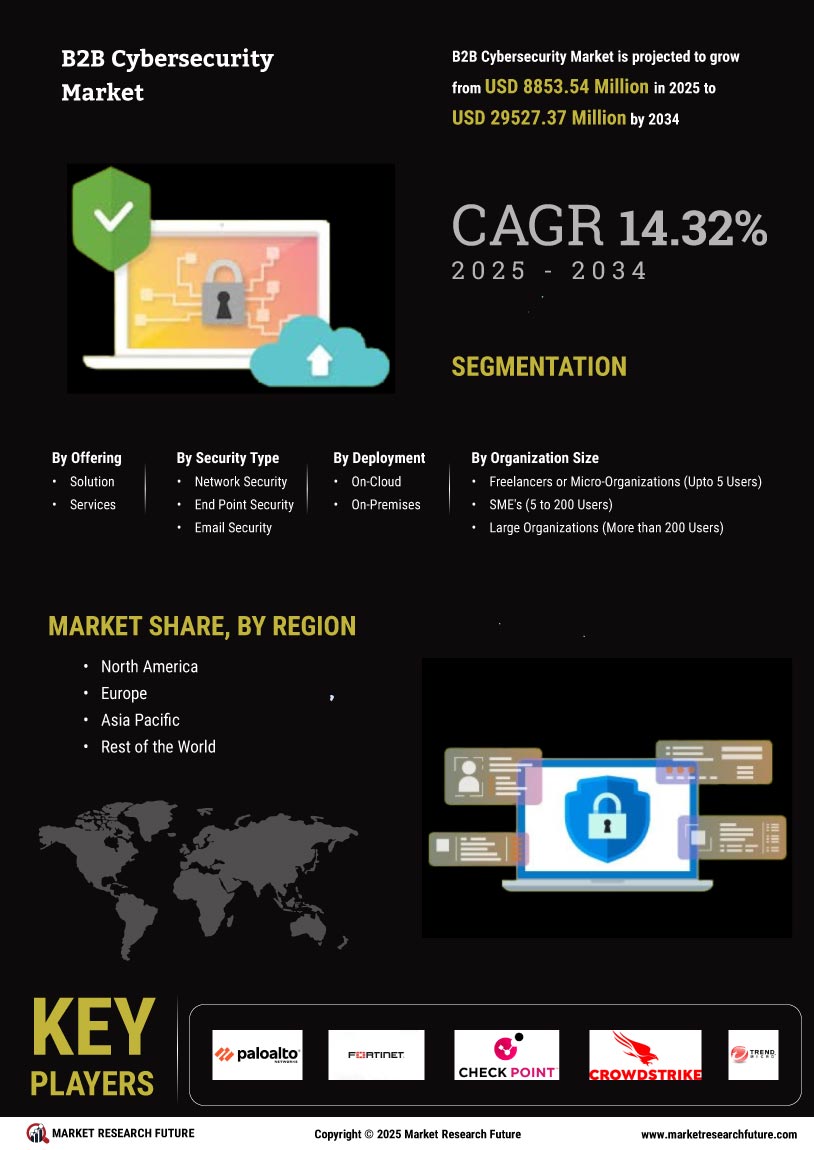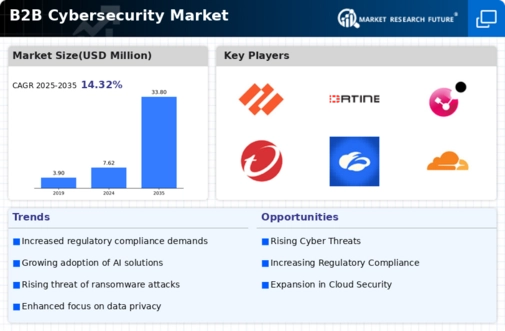By Region, the study provides market insights into North America, Europe, Asia-Pacific, and the Rest of the World. The North America B2B Cybersecurity market accounted for ~32% in 2022. It is expected to exhibit a significant CAGR growth during the study period. In North America region the B2B Cybersecurity Market, both, business and public organizations are experiencing incremental growth in cyberattacks; hence, the large investment in security fortification have led to the significant share of this region in the global market.
Additionally, the market is growing in this region due to other factors like rising cyberterrorism, malware and phishing threats, adoption of IoT, privacy concerns, and the emergence of disruptive digital technologies.
FIGURE 3: B2B CYBERSECURITY MARKET SIZE BY REGION 2022 VS 2032

Source: Secondary Research, Primary Research, Market Research Future Database, and Analyst Review
Further, the major countries studied in the market report are the U.S., Canada, Germany, France, the UK, Italy, Spain, China, Japan, India, Australia, South Korea, and Brazil.
Asia Pacific market accounts for the second-largest market share. The Asia-Pacific cybersecurity business is anticipated to grow even more as the severity of these attacks increases and government regulations tighten. The increasing use of cybersecurity solutions is a result of rising internet usage in both developed and developing nations. Furthermore, cybersecurity has become an essential part of any organization due to increasing data vulnerability brought on by the proliferation of the wireless network for mobile devices.
A growing number of developing nations, including China, India, Singapore, and Japan, are dealing with cybersecurity-related problems. In terms of DNS hijacks, India comes in third place, suggesting a significant increase in the registration of cybercrime. Furthermore, Asia was the most attacked region in the globe in 2021, accounting for 26% of all attacks worldwide, according to the IBM X-Force Threat Intelligence Index 2022. Asia's most attacked country ranking is headed by India. The cybersecurity industry may triple in size over the next ten years, according to recent analysis from the Australian Cyber Security Growth Network.
The Europe B2B Cybersecurity Market is expected to grow at the fastest CAGR between 2022 and 2032. The growing demand for cybersecurity solutions in Europe to safeguard businesses and governments from hostile cyber-attacks is driven by increased digitization. The development of online and data-driven organizations in the post-pandemic era raised the need for cyber security majors in corporations and government agencies across the globe, spurring the use of B2B cybersecurity solutions.
According to a European DIGITAL SME Alliance report published in October 2023, there was a significant increase in ransomware assaults, followed by phishing activities carried out over the same period each year, mostly targeting France, Germany, Italy, and Spain. The first quarter of 2023 witnessed a steady peak in attacks across all four quarters, with 7,772 new Common Vulnerabilities and Exposures being published. This underscores the dynamic and ever-changing nature of cyber vulnerability.




















Leave a Comment